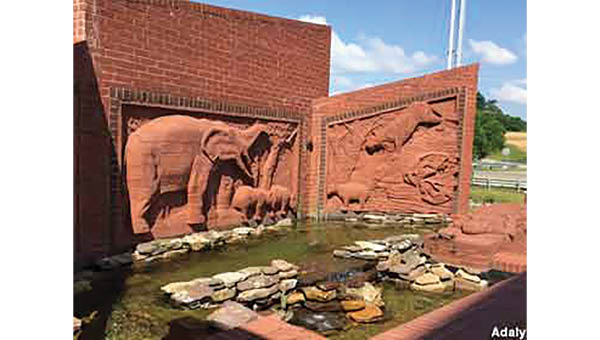Prep for adventure: Field season now open at Gray Fossil Site
Published 10:27 am Thursday, May 30, 2024

- Photo Contributed/The Gray Fossil Site is a treasure trove of fossil finds from millions of years ago. It is an active dig site. Visitors to the site can see paleontology researchers actually working in the lab.
|
Getting your Trinity Audio player ready...
|
Every summer, paleontologists at the Gray Fossil Site and Museum dig into the sediments of an ancient pond and uncover the five-million-year-old remains of plants and animals from the deep history of East Tennessee. Since the site’s unexpected discovery in 2000, scientists have identified thousands of fossils of rhinos, alligators, sabertooth cats, red pandas and even a bone-crushing dog.
The 2024 field season officially began earlier this month. Throughout the summer, a team of East Tennessee State University staff, students and volunteers will discover and preserve fossils on the site and in the museum labs.
This year’s excavation will focus on two areas of the site.
Trending
First is a new pit that the field crew often calls the “Mystery Pit” since it isn’t yet clear what fossils are waiting to be found there. This pit is located next to the museum, where visitors can walk up and peek in on the excavation. Second is the “Micro Pit,” an area known for well-preserved remains of small fossils.
“We’ve already found a partial salamander and bird eggshells in the Micro Pit,” says Lab and Field Manager Shawn Haugrud. “I’m excited about the chance to find more exquisitely preserved material.”
Preliminary excavations this year have already produced fossils of red panda, alligator and tapir. Each member of the field crew has a personal wish list of what fossils they most hope to find this year.
This year’s summer crew includes many students currently enrolled in the paleontology program at ETSU. These students are trained on-site by experienced museum staff, and they work alongside museum volunteers who participate both in the field and in the lab.
“It’s exciting for me because I’ve never dug for mammals before. I’ve never dug in this part of the country,” said Johannah Orendorff, an ETSU paleontology master’s degree student.
“I’m excited to see what the process looks like at Gray. It’s always different wherever you go,” said Derek den Ouden, another graduate student at ETSU.
Trending
Every year, excavation and sediment-screening produce hundreds of new fossils. Last year’s excavation focused on a juvenile rhino skeleton affectionately nicknamed “Puddin,” and a few years before that, the crew excavated the entire skeleton of a mastodon. All fossils are processed through the museum’s preparation lab before moving to the collections room, where they will be available for scientific research.
“We are acting as stewards of these fossils, enabling them to be preserved for future generations,” said Collections Manager Matthew Inabinett. “The Gray Fossil Site is a truly ‘lost world,’ our first window into this part of Tennessee’s deep history.”
The site is overseen by the Don Sundquist Center of Excellence in Paleontology at ETSU.






